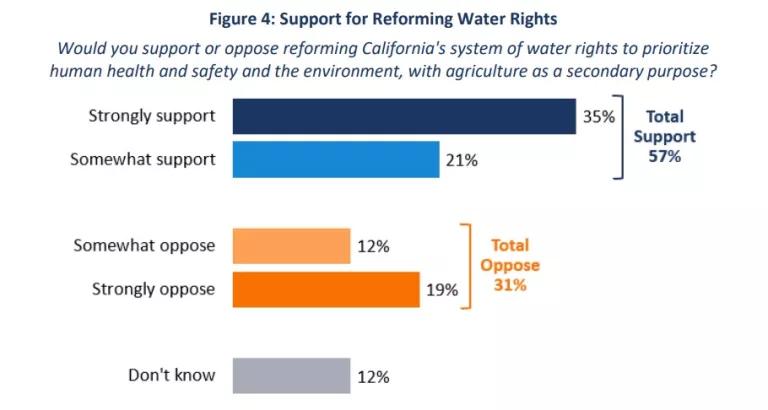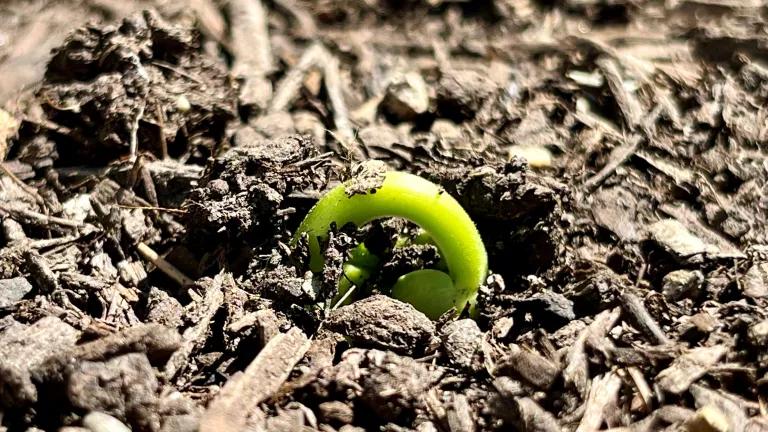Californians Want Water Rights Reform
Even the most casual observer recognizes that a long-delayed reckoning is coming on the Colorado River.
Even the most casual observer of western water recognizes that a long-delayed reckoning is coming on the Colorado River, with significant water cuts looming for those who divert water from the River. The same crisis is unfolding in a less visible way in California’s Bay-Delta estuary, the main hub for the state’s vast water supply system and the largest estuary on the west coast of the Americas.
Like the Colorado River, water diversions in California are built on a foundation of consistently extracting more water than Nature provides. California’s appropriative water rights system (“first in time, first in right”) currently determines the winners and losers as our water supply shrinks in the face of climate change.
Without reform, California’s system means that the most senior water rights holders—those who declared the water theirs during the violent and exclusionary settling of California in the late 1800s, early 1900s, predominantly irrigation districts—get first claim to the available water, while water for people to drink and bathe and water for the environment only get the leftovers.
But it doesn’t have to be this way. This century-old system of water rights does not reflect current values, and it should not dictate how the state prioritizes our limited water supplies. FM3 recently polled Californians to obtain their views on a variety of matters, including our water rights system. They found that nearly three in five respondents support reforming water rights to prioritize human health and safety and the environment over agriculture.

It's time for state leaders to pay attention to the will of the people and ensure that our water rights system represents today’s values, not the values of nineteenth century colonialists.
Water rights reform does not mean that agriculture would not continue to thrive in California. Agriculture currently uses 80% of our developed water supply and would continue to get a lion’s share of that water going forward, even when the total amount of supply is reduced. But in multiple drought years like we’re currently experiencing, which will be more common in the future, water would go first to people to meet basic health and safety needs, and to keep healthy the shared resources that we all rely on, like rivers and fisheries. Today, all too often, the opposite occurs, with perverse results.
For example, four irrigation districts in the San Joaquin Valley claiming senior water rights received more water this year than the entire City of Los Angeles uses in a good year. Meanwhile, water managers in Los Angeles are begging residents to cut back on showering and watering their yards.
Similarly, California’s native salmon runs are rapidly disappearing due to lack of sufficient water, irreparably harming all of those who have relied on healthy rivers and salmon for millennia. As north coast tribal leaders recently testified to the state legislature, water diversions and overallocation of water from the Klamath, Trinity, Scott and Shasta rivers are degrading water quality and jeopardizing the health of the river ecosystem.
“Our river is sick,” Yurok Tribal Chairman Joe James said. “Its species, along with us, will die if we don’t change the way we manage the Klamath River.”
Excessive diversions from California's largest estuary, the Bay-Delta ecosystem, have caused similar threats: "roughly 95% of historic wetlands in the delta have been lost, water pollution has caused calamity, and species that once flourished across the 61,000-square-mile watershed are collapsing. Among them, the Chinook salmon are dramatically declining. Known as Nur to the Winnemem Wintu Tribe, they are not only an essential resource but part of the culture.
"'We used to be 20,000 people along the river and we’re dwindling out like the salmon,' said Chief Caleen Sisk.... 'We only have 126 members of the Tribe left and so if the salmon are going extinct, we can only guess that so will we.'”
In the current drought, the State Water Board has taken some important initial steps to remedy these inequities, declaring that it is unreasonable under the State Constitution to allow senior water rights holders to trump the water needed for human health and safety, and to curtail water diversions by senior water rights holders in order to protect minimum stream flows on the Scott and Shasta Rivers, and on Mill and Deer Creek.
But throughout the majority of California’s rivers, the old inequities still reign. The Newsom Administration should not wait for California’s water crisis to worsen before taking action to modernize our water rights system. The state has the tools it needs to reform water rights and water contracts to make sure our system of water allocation reflects today’s values. Delaying using those tools will only lead to greater ecosystem collapse, escalating toxic algal outbreaks, and progressively more desperate calls to conserve as the demand for water in California increasingly exceeds the available supply.



